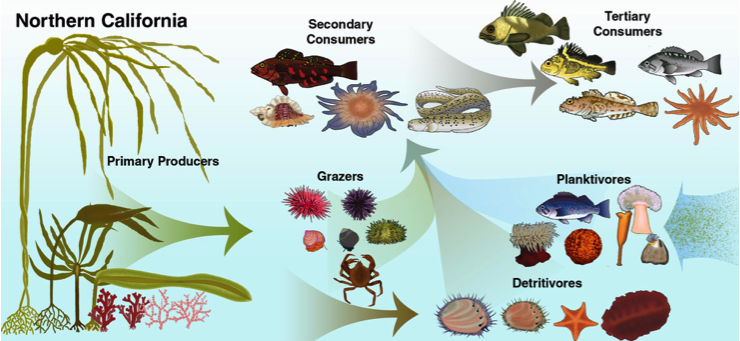How are multicellular algae important at a global level?
1 Answer
Multicellular algae are often termed seaweed. These are red, green and brown (=kelp) algae. Their most important contribution is production and release of lots of oxygen in atmosphere.
Explanation:
Seaweed can thrive in shallow saline water, light being the limiting factor. Thus they are present near sea shore, in coral reefs, in tidal pools as well as in brackish water lakes and river mouth.
Seaweed is consumed as food in many parts of the world. In places like Philippines and Japan, some people make their living through seaweed farming. (Though commercial farming by removing mangrove may negatively affect the environment.)
Seaweed may be significant in phytoremediation of nitrate, nitrite, phosphate, and several other undesirable chemicals from sea water. Many are used for making food suplements, colour, and gel.
Multicellular Sargasso, a brown algae, remain afloat in Atlantic ocean and trap sunlight for consumers of the sea. Multicellular brown algae, Kelp, support the most productive aquatic ecosystems in the world, but such places are now threatened due to human interference. Oceanic kelp forests support variety of living organisms: in a study it has been reported that killing of otters led to increase in sea urchin population leading to thinning of kelp forests.



